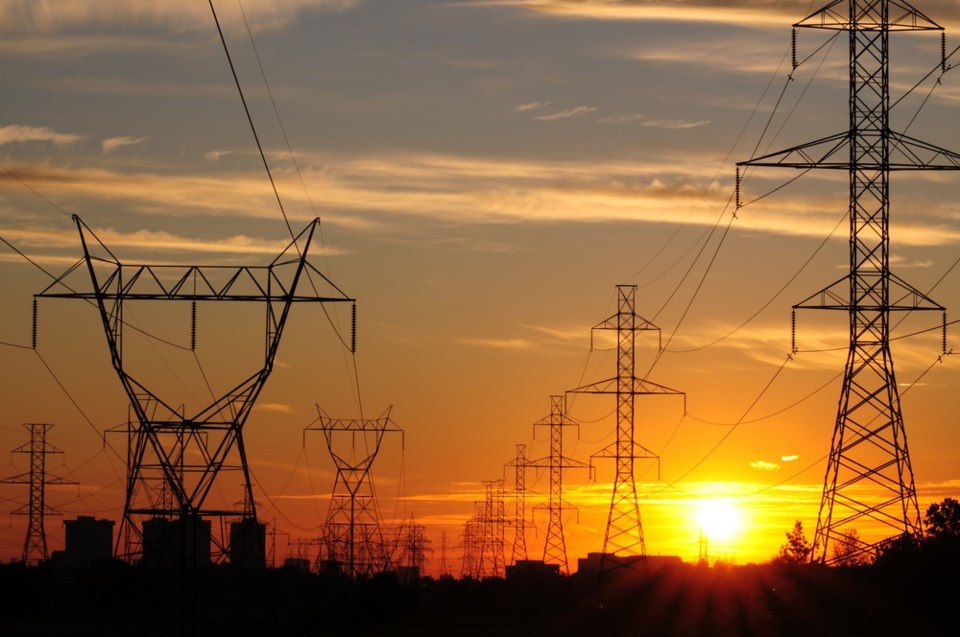A locally-hosted three-year pilot project involving electricity and large, specially designed batteries has several people charged up with enthusiasm.
Convergent Energy and Power’s seven-megawatt battery project is designed to efficiently store energy and release it to the grid during times of peak electricity use or during an electricity shortage.
To put the battery project’s capacity into perspective, one megawatt is equal to 10,000 100-watt lightbulbs.
Convergent’s battery project will be hosted by the Sault PUC and housed at one of the utility’s substations on McNabb Street.
Construction of the battery project at the substation is expected to begin within the next couple of weeks and be online by April 2017.
“Until relatively recently, battery technology has not advanced to the point where it made sense to incorporate it as part of the traditional electricity system,” said Johannes Rittershausen, Convergent CEO, speaking to SooToday in a telephone interview from his New York office Tuesday.
“Typically a grid will operate at less than 50 percent utilization and that’s because there’s no storage in the chain, and that’s because storage technologies (like batteries) were not inexpensive and reliable enough to really provide that excess capacity, but in the last 10 to 15 years we’ve had a revolution in battery technology.”
“These batteries can be turned on and off instantaneously and remotely from basically anywhere in the world and they are used often to balance fluctuations in the grid, and they can discharge over a longer period of time during a peak period,” Rittershausen said.
Convergent signed a contract with the Independent Electricity System Operator (IESO) to carry out the pilot project for three years.
“(But) the asset itself is expected to last 10 to 15 years and we’re building an asset that will last that long…the IESO wants an asset that will continue to provide power to the grid for the long term,” Rittershausen said.
“That’s our intention (to stay in the Sault for the long term),” Rittershausen said.
Convergent will be paid by the IESO for providing the battery service for the grid on a pay-for-performance basis, Rittershausen said, confident the project will be a profitable one for Convergent.
Convergent also has projects on the go in the U.S. and is currently building a five-megawatt project in Toronto.
Cost of the Sault project “is in the multi-million dollar range,” Rittershausen said.
“The Sault has become a laboratory for the grid of the future,” Rittershausen said, pointing to wind and solar power projects in the Sault and the city’s self-proclaimed status as the Alternative Energy Capital of North America.
“We’re happy to be a part of the Sault community, for sure,” Rittershausen said.
“It’s right up the Sault’s alley,” said Steve Butland, Ward One City Councillor and a longtime, ardent advocate of alternative, renewable energy.
“Here’s an example of someone saying Sault Ste. Marie is a good place to go to as a lab for future electrical grids.”
“The Sault needs and wants good news items, and this is a good news item…it’s a multi million dollar project, it will put some people to work (in its construction) and it’s very complementary to what we’ve been doing (in alternative energy products),” Butland said.
The PUC will act as host to the battery project, but “this is a community project and we should be touting this,” Butland said, adding he is confident there are other energy opportunities on the Sault’s horizon that are close to fruition.
“We’re proud to play a role in bringing this project to Sault Ste. Marie and we definitely look forward to supporting Convergent Energy as they bring this project to fruition in the future,” said Giordan Zin, PUC communications supervisor.
The benefit of the battery project’s storage of power and distribution of it will not be apparent on PUC customers’ bills overnight, Zin said, but added the utility company is confident technology such as this will be a benefit to the grid (and customers) in the long term.
